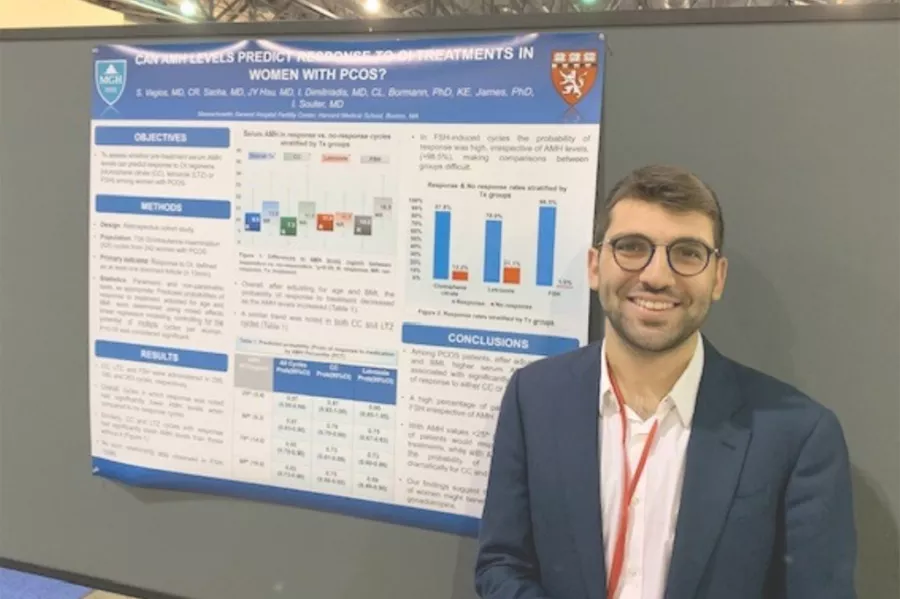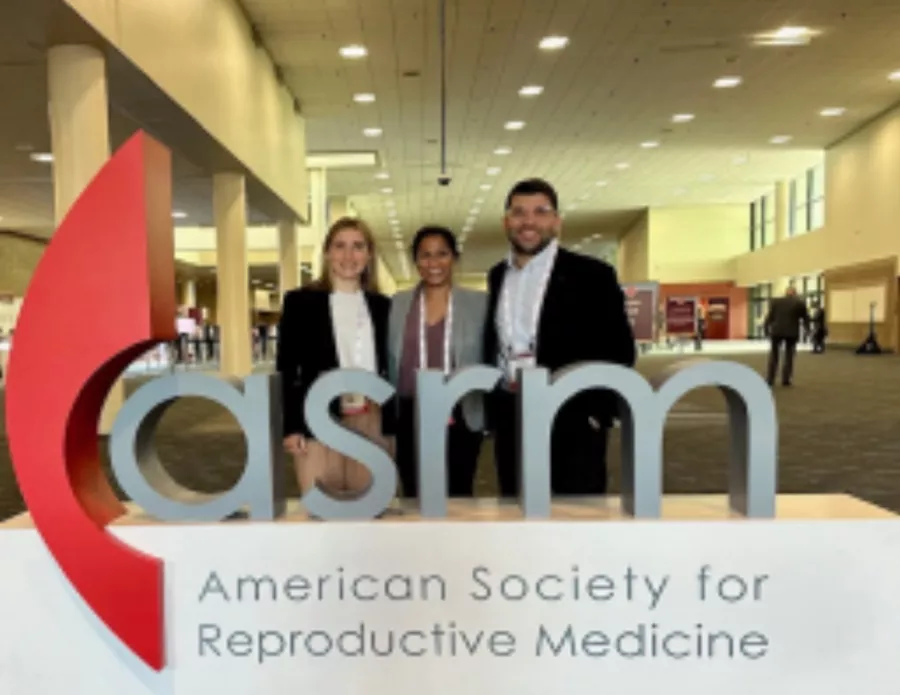Curriculum, research and activities provide the complete education
To supplement hands-on experience, we offer a wide range of academic activities, such as journal clubs, daily conferences and labs. Additionally, residents use clinical cases as springboards for reading and further investigation.
Although our curriculum is academically rigorous, the learning environment is collegial. Not only do residents share ideas, but they also work in a supportive atmosphere where everyone helps each other throughout the challenging journey of orthopedic residency
Activities outside the hospital environment include the journal club at faculty members’ homes, basketball scrimmages and the annual faculty-resident softball game. Additionally, many of the residents volunteer as team physicians for the local high school.
Many congratulations to our residents and faculty that have presented, or will present at local and national conferences this year!
2022 American Academy of Orthopaedic Surgeons Annual Meeting
Podium presentations
“Adverse Events Associated With Robotic-Assisted Arthroplasty: An Analysis of the U.S. Food and Drug Administration MAUDE Database” - Nicholas Pagani MD PGY-5, Mariano Menendez MD, Michael Moverman MD PGY-5, Richard Puzzitiello MD PGY-4, Matthew Gordon MD
“Antibiotic Administration Prior to Joint Aspiration Decreases Synovial Fluid White-Blood Cell Count in Native Joint Septic Arthritis” - Richard Puzzitiello MD PGY-4, Matthew Salzler MD, Sophie Lipson, Benjamin York, Daniel Finch, Alysse Wurcel MD, Robert Michaud, Mariano Menendez MD
“Patients with Limited Health Literacy Have Worse Preoperative Function and Pain Control and Experience Prolonged Hospitalizations Following Shoulder Arthroplasty” - Richard Puzzitiello MD PGY-4, Paul-Anthony Hart, Mariano Menendez MD, Michael Moverman MD PGY-5, Jacob Kirsch MD, Andrew Jawa MD
“The Reverse Fragility Index: A Systematic Review and Meta Analysis of Randomized Controlled Trials Assessing the Safety and Effectiveness of Aspirin for Venous Thromboembolism Prophylaxis After Total Knee and Hip Arthroplasty” - Michael Moverman MD PGY-5, Edward Mojica, Jeffery Shi, Nicholas Pagani MD PGY-5, Richard Puzzitiello MD PGY-4, Mariano Menendez MD, Matthew Salzler MD, Matthew Gordon MD
Poster presentations
“Arthroscopic Versus Open Treatment for Septic Arthritis of the Native Knee: A Systematic Review” - Richard Puzzitiello MD PGY-4, Avinesh Agarwalla, Raisa Masood, John Hanna, Nicholas Pagani MD PGY-5, Matthew Salzler MD
“Cemented Fixation in Hemiarthroplasty for Femoral Neck Fractures is Cost-Effective in Preventing Post-Operative Periprosthetic Fracture” - Nicholas Pagani MD PGY-5, Mariano Menendez MD, Michael Moverman MD PGY-5, Richard Puzzitiello MD PGY-4, Andrew Moon MD PGY-4, Scott Ryan MD, Simon Mears MD, C L. Barnesad MD
Failure Following Revision Total Hip Arthroplasty After Cobalt-Chrome Femoral Heads Are Placed on a Retained Femoral Stem” - Nicholas Pagani MD PGY-5, David Ramsden MD, Thomas Zink MD PGY-3, Daniel Ward MD, James Bono MD, Carl Talmo MD
“New Persistent Opioid Use among Opioid-Naïve Patients Following Total Joint Arthroplasty: Is There a Safe Quantity of Perioperative Opioids to Prescribe” - Nicholas Pagani MD PGY-5, Ruijia Niu MPH, Mei Chung, David Freccero MD, Eric Smith MD
“Orthopaedic Randomized Controlled Trials Published in General Medical Versus Orthopaedic Journals” - Andrew LaChance, Richard Puzzitiello MD PGY-4, Anna Michalowski MD PGY-2, Emily Disler, Matthew Salzler MD, Gabriel Perrone MD PGY-4, Stephen Sylvia MD
“Preoperative Alignment Predicts Need for Manipulation under Anesthesia after Total Knee Arthroplasty” - Andrew Moon MD PGY-4, Nicholas Pagani MD PGY-4, Joshua Proal, Michael Moverman MD PGY-5, Mariano Menendez MD, James Bono MD, James Nairus MD, Carl Talmo MD
“Preoperative Factors Associated with Failure to Reach the Patient Acceptable Symptomatic State After Anterior Cruciate Ligament Reconstruction in Patients Aged 40 and Older” – Richard Puzzitiello MD PGY-4, Matthew Salzler MD, Gabriel Perrone MD PGY-4, Stephen Sylvia MD
“Public Perceptions of Opioid Use Following Orthopaedic Surgery” - Alex McIntyre MD PGY-3, Nicholas Pagani MD PGY-5, Paul Van Schuyver, Richard Puzzitiello MD PGY-4, Michael Moverman MD PGY-5, Mariano Menendez MD, Joseph Kavolus MD
“Sham Incision Prior to Total Knee Arthroplasty for Patients with Previous Knee Incisions” - Thomas Zink MD PGY-3, Andrew Hagar MD, Christopher Fang, Anthony Gualtieri MD, Eric Smith MD, James Bono MD
“Socioeconomic Disadvantage Does Not Significantly Affect Outcomes or Cost After Elective Shoulder Arthroplasty” - Michael Moverman MD PGY-5, Richard Puzzitiello MD PGY-4, Nicholas Pagani MD PGY-5, Suleiman Sudah, Paul-Anthony Hart, Jacob Kirsch MD, Andrew Jawa MD, Mariano Menendez MD
“The Reverse Fragility Index: A Systematic Review and Meta-Analysis of Randomized controlled Trials in Sports Medicine Reporting Non-Significant Findings” - Michael Moverman MD PGY-5, Edward Mojica, Jeffrey Shi, Nicholas Pagani MD PGY-5, Richard Puzzitiello MD PGY-4, Mariano Menendez MD, Raisa Masood, Matthew Salzler MD
2021 American Academy of Orthopaedic Surgeons Annual Meeting
Podium presentations
“Anterior Cruciate Ligament Reconstruction in Patients aged 40 and Older: Patient Reported Outcomes, Higher Failure Rates, and a New Patient Acceptable Symptom State for the International Knee Documentation Committee Score” – authors including Stephen Sylvia MD PGY-5, Gabriel Perrone MD PGY-3, Matthew Salzler MD
“Does Orthopaedic Surgery Have a Personality?” – Scott Ryan MD, Sarah Stelma MD, Nicholas Pagani MD PGY-4, Richard Puzzitiello MD PGY-3, Mariano Menendez MD
“Impact of BMI on Opioid Consumption in Lumbar Spine Fusion” – authors including Taryn LeRoy MD PGY-5, Andrew Moon MD PGY-3, and Ashley Rogerson MD
“Public Perceptions and Disparities in Access to Telehealth Orthopaedic Services in the COVID-19 Era” - Richard Puzzitiello MD PGY-3, Michael Moverman MD PGY-4, Nicholas Pagani MD PGY-4, Andrew Jawa MD, Scott Ryan MD, Matthew Salzler MD, Mariano Menendez MD
“Take it or Leave it? The Fate of the Retained Antibiotic Cement Spacer” – Michael Moverman MD PGY-4, Scott Ryan MD
Poster presentations
“Adductor Canal Provides Minimal Benefit in Addition to Periarticular Injection in Total Knee Arthroplasty” – Andrew Hagar MD PGY-5, Matthew Salzler MD
“Complete Capsule Closure Provides Clinically Significant Outcome Improvement and Higher Survivorship after Hip Arthroscopy at Minimum 5-year Follow-Up” – authors including Justin Drager MD
“Defining the Time Required to Achieve Clinically Significant Outcome Improvement after Total Shoulder Arthroplasty” – authors including Justin Drager MD
“Do Outcomes of Meniscal Allograft Transplantation Differ Based on Age and Sex? A Comparative Group Analysis” – authors including Justin Drager MD
“Prospective, Randomized, Double-Blind Clinical Trial to Investigate the Efficacy of Autologous Bone Marrow Aspirate Concentrate Post-Meniscectomy: Preliminary Benefits” – authors including Justin Drager MD
“Public Perceptions and Preferences Regarding the Use of Stem Cell Therapies in Orthopaedic Surgery” – Richard Puzzitiello MD PGY-3, Mariano Menendez MD, Michael Moverman MD PGY-4, Nicholas Pagani MD PGY-4, Matthew Salzler MD
“Preoperative Allergy Testing for Patients Reporting Penicillin and Cephalosporin Allergies is Cost-Effective in Preventing Infection after Total Knee and Hip Arthroplasty” - Nicholas Pagani MD PGY-4, Michael Moverman MD PGY-4, Richard Puzzitiello MD PGY-3, Mariano Menendez MD, C Lowry Barnes MD, Joseph Kavolus MD, Matthew Salzler MD
“Should Post-Call Surgeons Operate the Next Day?” – Scott Ryan MD, Paul Tornetta MD, Andrew Hagar MD PGY-5, Matthew Salzler MD
Instructional Course Lectures
“Posttraumatic Arthritis of the Distal Radioulnar Joint: Contemporary Perspectives” - Charles Cassidy MD
“Contemporary Questions and Controversies Regarding the Assessment and Management of Distal Radius Fractures: What is the Best Evidence in 2021” – Charles Cassidy MD

